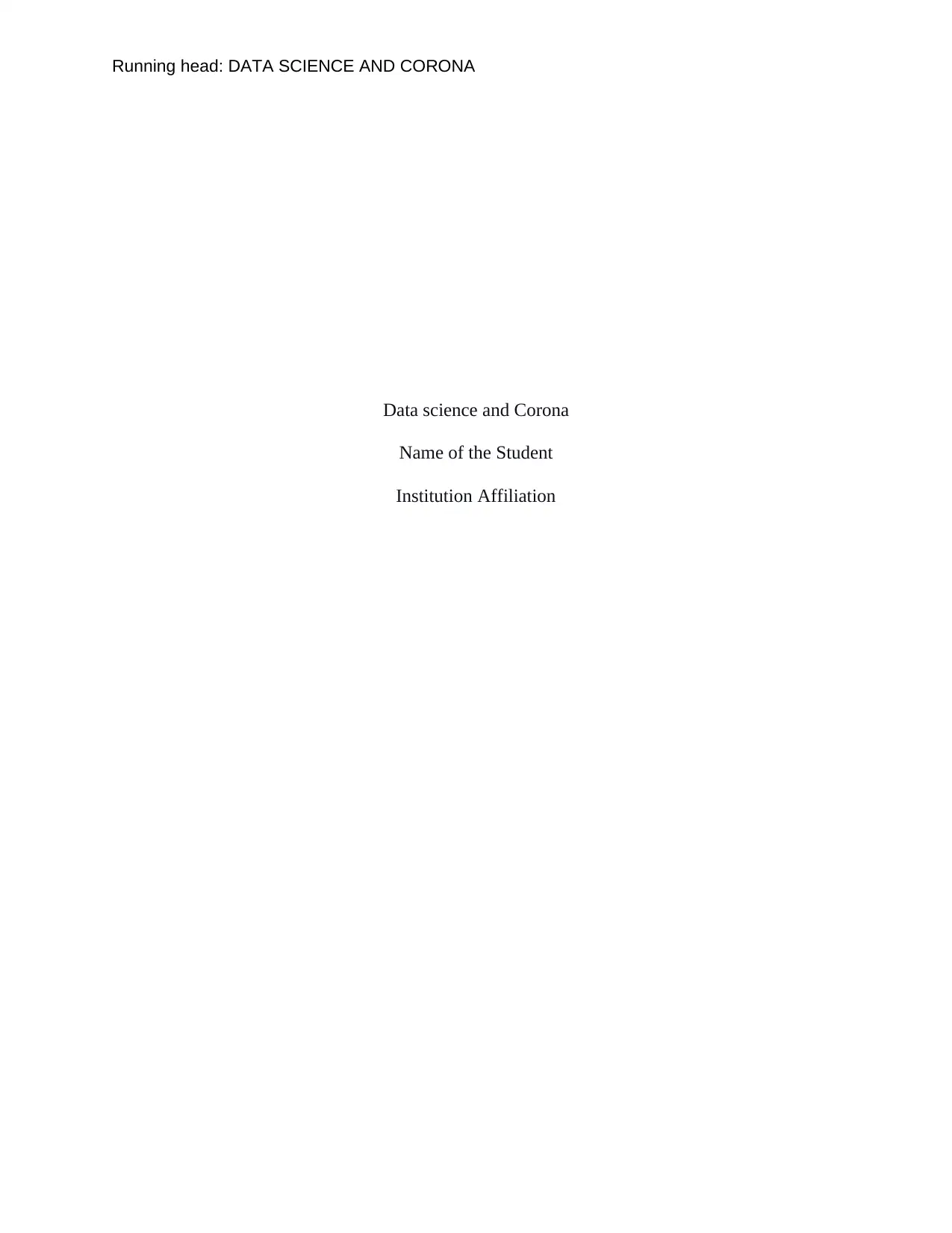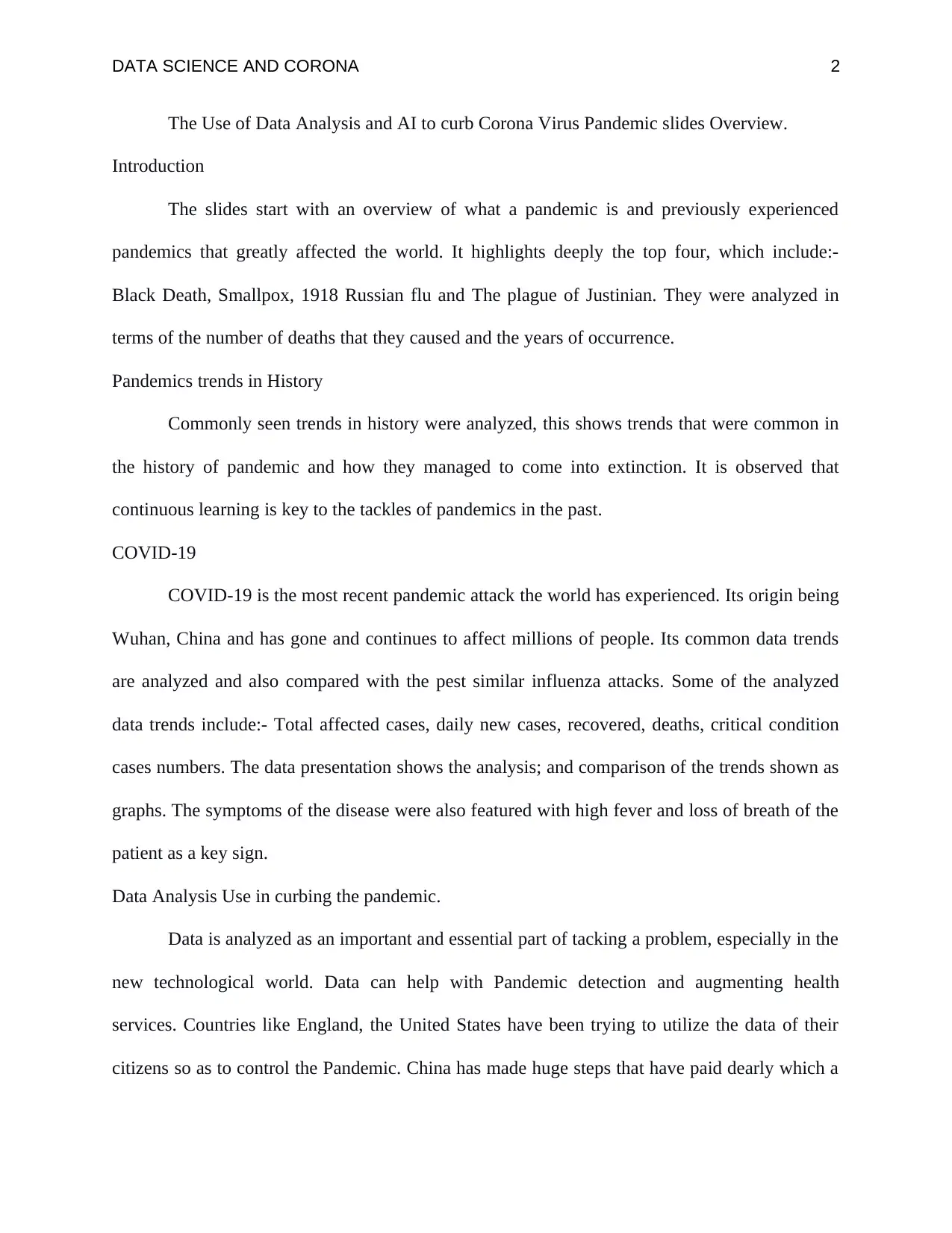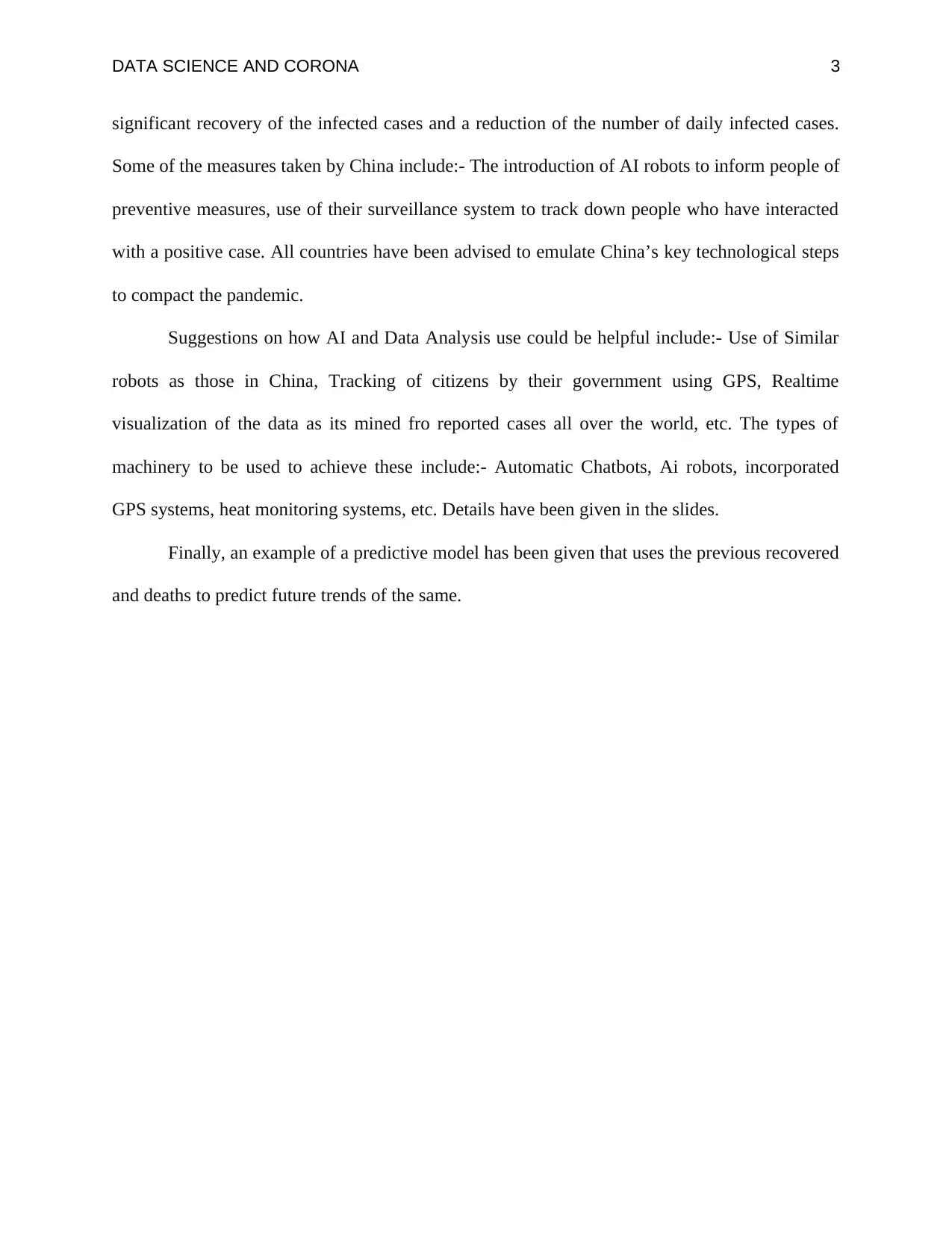Data Science Presentation: Corona Virus Pandemic and Data Analysis
VerifiedAdded on 2022/07/29
|3
|525
|22
Presentation
AI Summary
This presentation provides an overview of the application of data science and AI in understanding and managing the COVID-19 pandemic. It begins by outlining historical pandemics like the Black Death and the 1918 flu, analyzing their impact and trends. The presentation then focuses on the COVID-19 pandemic, examining data trends such as total cases, daily new cases, recoveries, and deaths, and compares them with previous influenza outbreaks. It highlights the use of data analysis in curbing the pandemic, including examples from countries like China, which have used AI robots and surveillance systems to track and manage the spread. Furthermore, the presentation suggests the use of AI robots, GPS tracking, and real-time data visualization. Finally, it includes an example of a predictive model used to forecast future trends based on past recovery and death data. This analysis aims to demonstrate the critical role of data science in public health and pandemic response.
1 out of 3




![[object Object]](/_next/static/media/star-bottom.7253800d.svg)